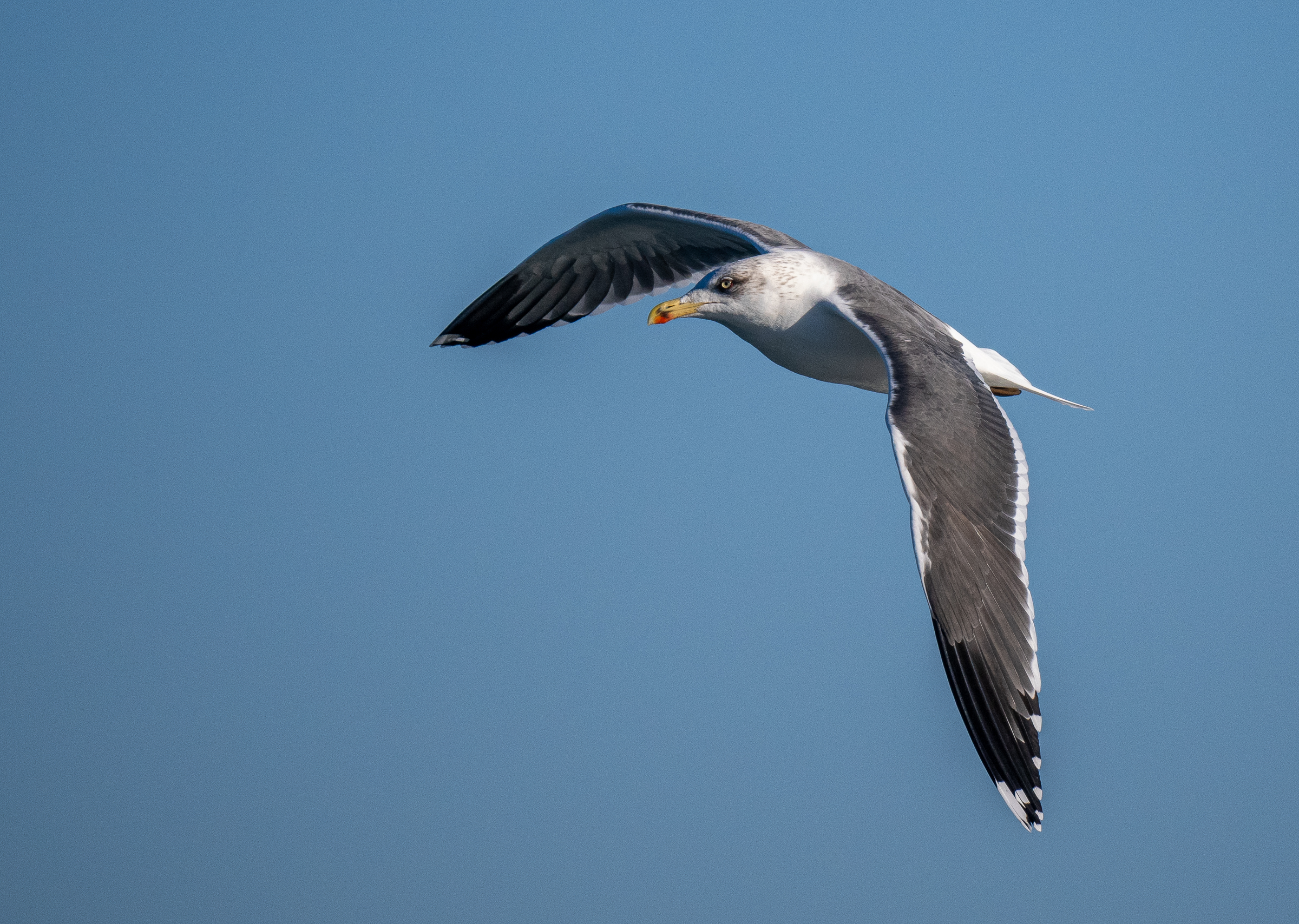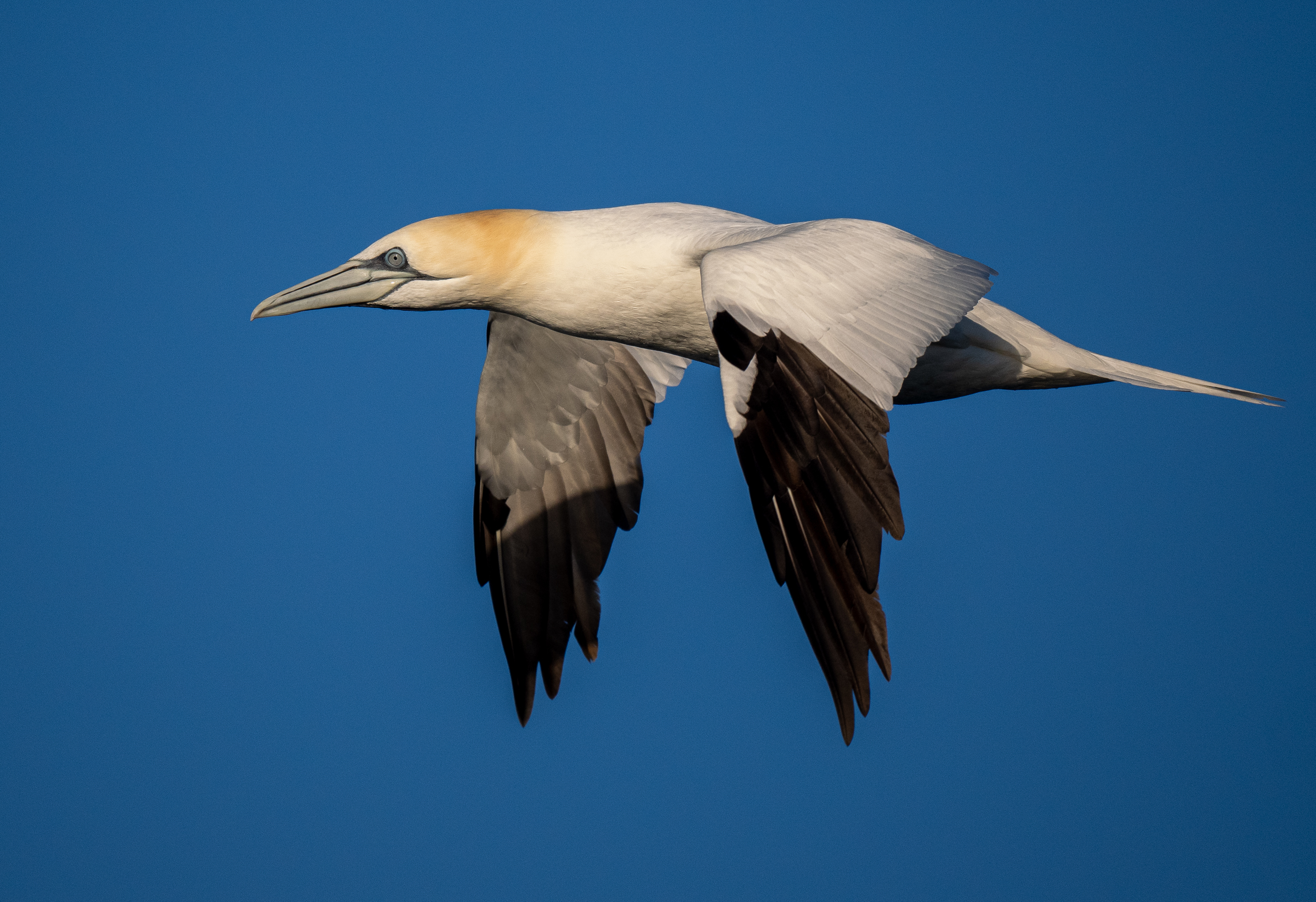Being back in the US on my own, while the interminable wait for Nikki's visa continues, is mostly somewhat of an annoyance for me. It's nice to be back in some ways of course, but the whole point of getting married was so that we could be together, not stuck in yet another interminable stint of long distance.
There are silver linings though, one of them being that living on my own and being stuck in one place means that I can drop what I'm doing and head out on a whim on some birding adventure. That's exactly what I did last weekend, when I got a text from Mollee that she was guiding a Hillstar Nature pelagic birding trip off the coast of Maryland on Sunday. I had never been on a pelagic before, and it's not like I was going to be missing out on any amazing birds back in DC so, well, why not?
Pelagics are one of those things that birders do that, if you describe it to a layman, will get you a quizzical look and perhaps some questions about your sanity. Imagine 30 people packed onto a fishing boat heading out into the Atlantic as far away from shore as they can get, except instead of looking for fish they're hoping to see approximately 10 species of bird, most of which will be flying away and visible as tiny dots against the horizon. Oh, and it's the middle of winter and the skipper is spending the entire boat ride chopping up stinky dead fish to throw over the side of the boat to bring the birds in. Totally normal stuff.
With the exception of a disastrously aborted pelagic out of New York City back in 2021 (long story), this was going to be my first time trying such a thing. I'm not the world's biggest fan of open water where I can't see the shore or bottom, and I also wasn't sure how susceptible I was to getting seasick, the scourge of pelagic birding. The previous Hillstar pelagic in January had had amazing luck, with things like over 1,000 Dovekies, a Black-capped Petrel, and a critically endangered North Atlantic Right Whale, so I was hopeful that at least a little bit of that luck would replicate. While I'd seen most of the expected birds from shore in the past, there were a few birds that were major targets for me, including Dovekie, Black-legged Kittiwake, and Northern Fulmar.
I drove from DC out to Ocean City, Maryland on Saturday night and spent the night at a hotel near the port, as the departure was stupidly early the next morning. Sure enough, I rolled out of bed at 5:30 next to the morning and met the crew, guides and other participants at the Ocean City marina before sunrise. Along with Mollee I was surprised to see Vikas and Andy, two other DC birders who I already knew. At the dock we got the basic orientation on pelagic rules (call out every bird, don't fall off the boat, etc.) and met all of the guides. The horizon was still barely light by the time we headed out.
 |
| Our boat at the dock |
 |
| Dawn at the harbor |
The birding started practically as soon as we left the dock. Skeins of Black Scoters and Surf Scoters flew low across the water just offshore, and a flock of gulls almost immediately formed off the back of the boat- tempted in by the bits of dead fish that the skipper threw off the boat the entire day. It started with Herring Gulls, Great Black-backed Gulls, Lesser Black-backed Gulls, and Ring-billed Gulls, with a few Bonaparte's Gulls and Red-throated Loons flying by. As we got further from shore, the Northern Gannets started to appear. They're not exactly rare birds but this was my first time seeing so many of them this well. Like all sulids they look extremely silly until you see them darting into the ocean at extremely high speeds to catch their prey. I eventually had to restrain myself from taking so many pictures of gannets, as I wanted to save some space on my memory card for the other targets. Easier said than done when they were flying around at close quarters in the gorgeous sunrise light.


 |
| Black Scoters at sunrise |
 |
| Great Black-backed Gull |
 |
| Herring Gulls with a photobombing gannet |
 |
| Northern Gannet |
 |
| Red-throated Loon |
As we got further east and the sun rose, two things happened. First, it got wavy. Very wavy. The forecast had been for swells of 4 to 6 feet, but by the time we were out of sight of land the waves were getting over 10 feet high, and extremely choppy. I spent most of the time at the back of the boat, where it was a bit less wavy, and found out to my relief that I do not, in fact get seasick. Lord knows that if I did it would have been on that trip. The same can't be said for all the other passengers, and I had to spend part of the ride avoiding some flying, uh, projectiles.
The other thing that happened was that the alcids finally started appearing. Alcids–fat ocean-going birds that look like little flying penguins–are one of the prime targets of any winter pelagic, and they were out in good numbers. It started with some Razorbills flying past the boat, but soon we got into Dovekie territory. That was my main target for the trip and they turned out to be pleasingly numerous, though difficult to see well or photograph- tiny birds that fly like bullets over just over the surface of the ocean, and either dive or take off as soon as the boat gets close. Apparently that's because Great Black-backed Gulls enjoy snacking on Dovekies, which makes sense if you see them- they're tragically tasty-looking.
 |
| Razorbills |
 |
| Dovekie, showing off why they're not exactly masters of the air |
 |
| Great Black-backed Gull cruising for some Dovekies |
As we got further away from shore, the flock of Dovekies we had been going through thinned out, and even the gulls got more scarce. One of the guides spotted a Northern Fulmar, one of the main birds I'd been hoping to see on the trip, and a few folks got on it but I was sadly not one of them, making it a rather frustrating miss. We did get good looks at a lone Atlantic Puffin chilling out on the surface, and there were a couple of Common Murres. A pod of Common Dolphins made an appearance by the side of the boat but didn't hang around for too long. I was constantly amazed at how good the guides (Mollee, Zach and Mikey) were at spotting, IDing, and getting everyone on the tiny little dots that were the flying alcids, even as the boat bucked and bounced under them. Even more impressively, Zach and Mikey managed to do so without even holding onto the hand rails, a feat of core strength I'm not sure I can ever hope to match.
 |
| Atlantic Puffin |
 |
| Immature Greater Black-backed Gull |
 |
| Behold, a Common Dolphin! |
The boat made it about 30 miles off the coast before it was mid-day and time to turn around. By around hour 5 the pelagic went from exhilarating to exhausting; a combination of the bouncing of the boat, the monotony of the scenery, and the ever-decreasing number of birds began to wear on all of us physically and mentally. Being in the back and within striking range of the bits of dead fish being thrown overboard didn't help. I didn't want to take a break though, partly because I didn't want to miss any good birds, but also because the boat was moving up and down so much that resting wouldn't really be too comfortable anyway. Instead, I remained standing at the back of the boat, constantly scanning the horizon for birds.
About halfway back to shore the gulls began to return to the boat, mostly the usual combination of Herring Gulls, Lesser Black-backed Gulls, and Great Black-backed Gulls. Suddenly, a tiny white gull dropped into the flock from on high and the call went up from the guides- "KITTIWAKE!" Everyone rushed to the deck to get eyes on the Black-legged Kittiwake that had just come in, and we got spectacular views as it made a couple circles around the boat then flew back off to sea. That was my second lifer of the day, and a welcome one even though I had messed up my camera settings and didn't get any good pictures.
 |
| Black-legged Kittiwake |
 |
| Lesser Black-backed Gull showing off that nice smoky eye |
As we came closer to shore the gull and gannet density increased, and I happily filled up my memory card trying to get good flight shots of all of them. A small flock of Razorbills flew by, but other than that there were no more interesting birds until we got into the harbor. There were some nice birds there like a flock of Brant, lots of Red-breasted Mergansers, and a single Purple Sandpiper in amongst the Dunlins and Sanderlings, but by then we were mostly focused on getting into shore.
 |
| Not every day I manage a headshot of a bird in flight... |
 |
| I absolutely love the pattern on immature Northern Gannets |
 |
| Herring Gull |
We piled off the boat and onto the dock just before sunset, exhausted but happy. I bid goodbye to Mollee and the other guides and participants and made the 3-hour drive back to DC. 10 hours of standing on a bouncing boat getting whipped by the wind and splattered by fish guts had me cold, exhausted, and smelling like dead fish but mostly it was making me already look forward to my next pelagic trip. Hoping the next one involves warmer weather and perhaps some shearwaters and petrels...




























































Comments
Post a Comment